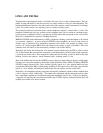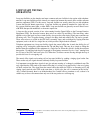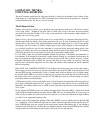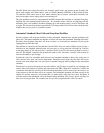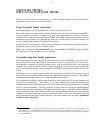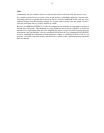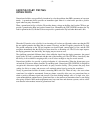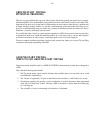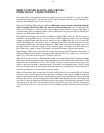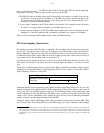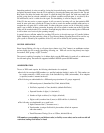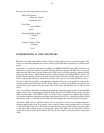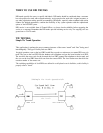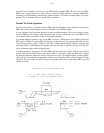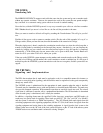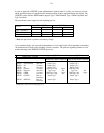-11-
DIRECT INWARD DIALING (DID) TRUNKS:
OPERATIONAL CHARACTERISTICS
Loop-start trunks and ground-start trunks are simple, two-way local facilities, i.e., they can handle
incoming and outgoing calls. The operation of loop-start and ground-start trunks can be understood by
analogy to the residential service in your your home.
Direct Inward Dialing (DID) trunks are different.
DID trunks are not two-way trunks and cannot be
used for outgoing calls from the PBX, they are only used for incoming calls.
Also, an individual DID
trunk is not associated on a one-to-one basis with a telephone number. Instead, a group of DID trunks is
associated with a block of telephone numbers, and any DID trunk in the group can carry an incoming call
directed to any DID number in the block.
DID trunks take advantage of the switching capabilities of both the PBX and the CO. The first step in an
installation involving DID service is to order a block of DID telephone numbers from the operating
company and the DID trunks that this group of numbers will serve.
(Note:
There will
always be
more DID
numbers than DID trunks.) This block is a list of sequential numbers that will route incoming calls to the
corresponding DID trunks. The minimum number of DID numbers that must be ordered varies from
operating company to operating company. Some companies require a minimum of 20 DID numbers per
block. Others may require as many as 100 numbers, and each DID number is billed to the customer.
When planning a DID setup, it should be kept in mind that generally each DID number corresponds to a
particular telephone station number or hunt group. The number 555-8743, for example, may correspond to
station 743, or to a Direct Call Group 555-7724 (Group code 724).
When the CO receives a call on a DID telephone number, it first identifies the block of telephone numbers
that includes this DID telephone number. It then determines the group of DID trunks that this block of DID
numbers has been administered to serve. The CO then selects one of these trunks and (in most cases)
checks to make sure the trunk is operating properly. If the trunk is not operating properly, the CO selects
the next available trunk in the same group and checks again. If no working trunks are available the CO
routes the incoming call to a reorder signal (a fast busy signal).
When an idle trunk has been selected, the CO signals the PBX that it has an incoming DID call. Then the
CO sends a series of pulses that identify the station that is intended to receive the call.
(Note:
In Controlled
Address Signal Outpulsing DID systems, described below, the CO signals the PBX that it has an incoming
DID call and waits for an acknowledgement from the PBX. When the PBX properly acknowledges the
signal the CO sends the addressing information and the call proceeds.) The addressing information is taken
from the network, and is based on the number that was actually dialed by the person who originated the
call. This permits each user to have exclusive use of a telephone number without requiring a dedicated
trunk.



